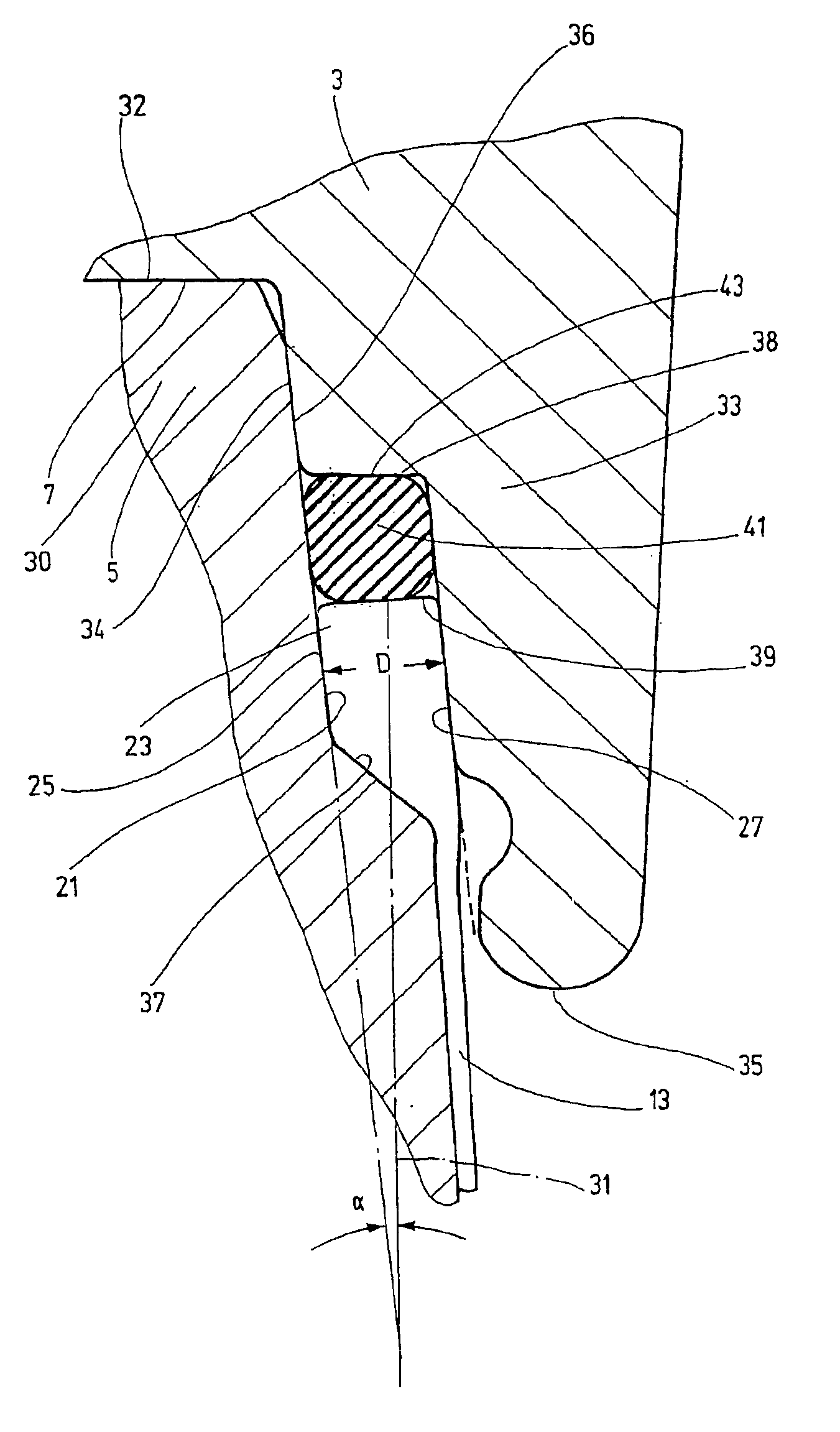Hydropneumatic pressure reservoir
a technology of hydropneumatic pressure and reservoir, which is applied in the direction of mechanical equipment, rigid containers, transportation and packaging, etc., can solve the problems of contact mismatch, disruption of assembly process, and even damage to the assembly process, so as to avoid disadvantages and simplify assembly
- Summary
- Abstract
- Description
- Claims
- Application Information
AI Technical Summary
Benefits of technology
Problems solved by technology
Method used
Image
Examples
first embodiment
FIG. 2 shows the area designated as II in FIG. 1 on a larger scale so as to present in greater detail the configuration of the edge area 21 of the diaphragm 13 and of the retaining device for clamping the diaphragm 13. In the first embodiment shown in FIGS. 1 and 2, the edge area 21 of the diaphragm 13 has a bead-like thickening 23 seated between two retaining surfaces, a first retaining surface 25 associated with the housing shell 5 and a second retaining surface 27 associated with the housing shell 3. The retaining surfaces 25 and 27 extend over the entire circumference of the pressure reservoir housing equidistant from each other. An annular gap is formed between retaining surfaces 25 and 27 for seating of the edge area 21 of the diaphragm 13. This annular gap is of a constant clear gap width D over its axial extent (FIG. 2).
In FIG. 1, the longitudinal axis 29 of the pressure reservoir 1 is defined by the approximately spherical form of the housing shells 3 and 5. The longitudina...
fourth embodiment
Lastly, FIG. 5 illustrates a In the area identified as IV / V in FIG. 3, sealing elements 61 and 63 are seated in annular grooves on both sides of the folded outward edge of the diaphragm 13. These sealing elements 61 and 63 in turn serve both as additional force storage elements for clamping force generation and as seals. The respective sealing elements are preferably used in pairs, sealing off from the gas side and from the hydraulic side. With an appropriate design of the diaphragm 13, the sealing elements can perform exclusively the function of sealing on the oil side.
PUM
 Login to View More
Login to View More Abstract
Description
Claims
Application Information
 Login to View More
Login to View More - R&D
- Intellectual Property
- Life Sciences
- Materials
- Tech Scout
- Unparalleled Data Quality
- Higher Quality Content
- 60% Fewer Hallucinations
Browse by: Latest US Patents, China's latest patents, Technical Efficacy Thesaurus, Application Domain, Technology Topic, Popular Technical Reports.
© 2025 PatSnap. All rights reserved.Legal|Privacy policy|Modern Slavery Act Transparency Statement|Sitemap|About US| Contact US: help@patsnap.com



